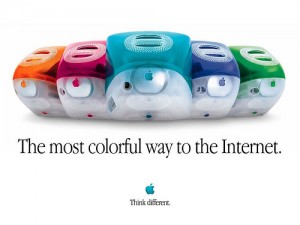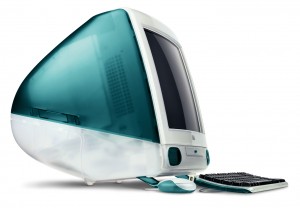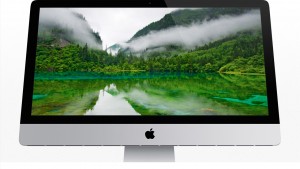By Gadjo Cardenas Sevilla
Apple Computer went from being 90 days away from going bankrupt to becoming the most valuable company in the world and this epic comeback started with a little computer called the iMac.
When the iMac was introduced in 1998, it challenged the convention of what a personal computer should be. The gumdrop-shaped “Think Different” computer was, like the original Macintosh, an all-in-one machine. The monitor was the CPU and everything was connected by a few wires.
 Fun, powerful and completely offbeat, the iMac made Apple cool again. It redefined the PC space by shedding old I/O technologies like parallel and serial ports, it featured a new standard called USB (Universal Serial Bus) which at that time didn’t even have peripherals.
Fun, powerful and completely offbeat, the iMac made Apple cool again. It redefined the PC space by shedding old I/O technologies like parallel and serial ports, it featured a new standard called USB (Universal Serial Bus) which at that time didn’t even have peripherals.
The iMac turned the personal computer into an object of desire (and not just by geeks), and catapulted itself into popular culture and even movies, TV shows and fashion magazines. Yet, it was a completely functional computer, a real Mac which could keep pace with the PCs of the day.
More importantly, the iMac’s “I” pertained as much to the individual user as it did the Internet which was still in its early stages (hello, dial-up modems!). The iMac became Apple’s big moneymaker, it sustained Mac OS and kept loyal users in the ecosystem long before the iPod, the MacBook, the iPhone or the iPad were even on the drawing board. The iMac was Apple’s best marketing tool and it brought the brand back from the brink.
You can trace the evolution of Apple’s design by looking at the history of the iMac. From the colourful plastics and roundish shape to the lampshade and eventually the sleek, suspended flat screen design that’s been chiseled to a razor’s edge while still maintaining all the power and sophistication expected from the world’s most popular all-in-one machine.
The iMac is also the most copied PC of all time. When Apple used transluscent plastics, boy did the competition fall all over themselves to snap-on Bondi blue coloured panels on their boring beige boxes. When Apple went all-aluminum, so did the competition even if their iMac knockoffs were thicker, less elegant and less intuitive.
When the iMac went all wireless, so did the competition who didn’t even bother to create their own designs for wireless keyboards and mice and were happy to just copy Apple’s designs.
Even now, in the so-called “Post-PC” world, a phrase coined by Apple itself to usher in the tablet age, the iMac remains one of the most iconic and untouchable products, even if the world has moved on.
Rival all-in-one PCs are now sporting multi-touch enabled screens to accommodate Windows 8, some offer different ways to fold the screen from a vertical position to an almost horizontal position, like a large tablet.
Apple’s latest iMac seems to have borrowed a lot of inspiration from the iPad and the MacBook Air. It is incredibly thin at the edges, 5mm to be exact. It also has 40 per cent less volume than the previous version while still maintaining all the key features that make it an iMac. Apple has even used a new fabrication technique called called friction-stir welding. As Apple explains it, “this process uses a combination of intense friction-generated heat and pressure to intermix the molecules of the two aluminum surfaces — creating a seamless, precise, and superstrong join.”
The iMac also seems to have ascended in status from Apple’s consumer-oriented model to their professional model. The Mac Pro hasn’t been radically updated in ages and the iMac’s performance is comparable to many high-end PC’s specially when using the latest processors and SSD drives.
One thing remains the same with Apple’s iMac, when you use it, everything else seems to fade around the experience. It is still one of the most enjoyable computers to use.






